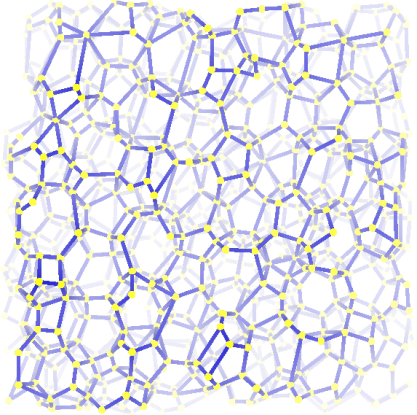您现在的位置: 综合新闻
斯洛文尼亚马里博尔大学Zoran Ren教授和Matej Vesenjak博士来重点实验室进行学术交流
2011年12月9日,斯洛文尼亚马里博尔大学机械工程系的Zoran Ren教授和Matej Vesenjak博士应陈鹏万教授邀请,来爆炸科学与技术国家重点实验室进行学术交流,并作了题为“Mechanical properties of aluminum foams: Experimental and computational study”的专题学术报告。重点实验室副主任王成教授、魏雪霞教授和机电学院部分师生参加了本次报告会。报告会由陈鹏万教授主持。

在报告中,Zoran Ren教授首先介绍了多孔的金属材料的低密度轻质、以及吸能好的突出的优异性能,在现代的机械工程中开始得到了应用,并有着广泛的应用前景。接着介绍了不同结构的金属泡沫材料的制备方法及其基本性能和应用。重点介绍了泡沫铝材料,对其优缺点进行了比较。Matej Vesenjak博士主要介绍了泡沫铝力学行为在冲击载荷作用下得到的实验测试结果,并利用CT扫描泡沫铝试样建立三维模型,结合有限元软件对三维不规则泡沫铝结构进行数值模拟分析,并与实验结果对比,两种方法得到的结果的一致性很好。报告引起了在场师生强烈关注和浓厚兴趣,与会老师同学纷纷就泡沫铝材料及数值模拟等问题与两位学者进行了交流和探讨。

Abstract:
Light weight metallic materials, such as aluminum foams, have an attractive combination of mechanical and thermal properties, e.g. low density and high specific stiffness in relation to their weight and are thus very suitable for applications in many modern engineering products. Their behavior under mechanical loading mainly depends on relative density and base material, with other influential factors being morphology (open or closed cell), the geometry and topology (regular or irregular structure) of the cellular structure. Aluminum foams are particularly suitable for use in impact energy absorbers, which are subjected to high strain rate deformations. Since there are only few research results available in this regards, it is particularly important to further study their behaviour and properly characterise all important influential parameters. This can be best achieved through combination of dedicated experimental testing programme and subsequent computational simulations.
The presentation will first review some basic properties of aluminum foams and discuss their advantages and shortcomings. Then, their application possibilities will be briefly discussed. Next part of presentation will be dedicated to discuss the results of conducted experimental testing of aluminum foam samples with particular attention to their behaviour under impact loading. The presentation will then focus on our methodology for proper 3D geometrical modelling of irregular aluminum foam structure and consequent formation of lattice finite element model, used in computational simulations. At the end some results of parametric computational simulations of aluminum foam behaviour under different loading conditions will be presented. The presentation will close with some derived conclusions of conducted study and a proposal for cooperation in further experimental and computational studies of cellular materials.


